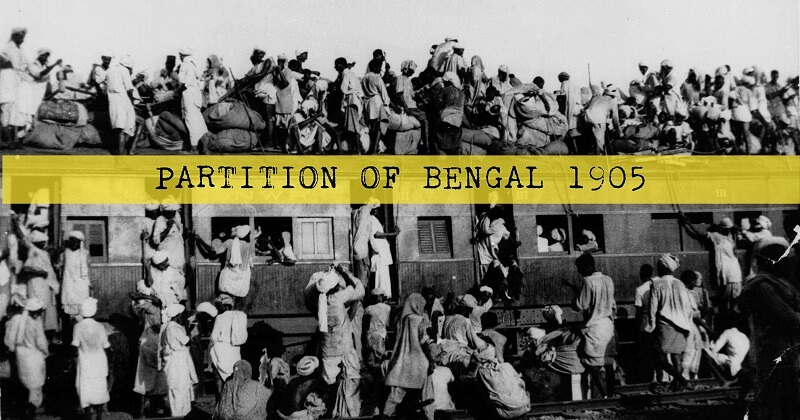
Since 1765 (following the Battle of Buxar) the province of Bengal, which included present-day West Bengal, Bihar, Odisha, Bangladesh and Assam was under the British. It was a very large area and the population rose to almost 80 million by the first few years of the 20th century. Calcutta was the capital of the province and also of British India.
There were difficulties in administering such a large area. The eastern part, especially in rural areas were neglected.
That region was lacking in the fields of industry, education and employment. Much of the industry was centered on Calcutta. For administrative ease, the partition of the province had been proposed even before Curzon had arrived in India.
In 1874, Assam was sliced away from Bengal and put under a Chief Commissioner.
Initially, Lord Curzon proposed the partitioning of the province as an administrative measure solely. In 1904, he undertook a tour of eastern Bengal. The idea of using the Bengal partition as a political tool to undermine the growing nationalism in Bengal and other parts of India occurred later.
As per Curzon, after the partition the two provinces would be Bengal (including modern West Bengal, Odisha and Bihar) and Eastern Bengal and Assam. Bengal would also lose five Hindi-speaking states to the Central Provinces. It would gain Odia-speaking states from the Central Provinces. Eastern Bengal would consist of Hill Tripura, Chittagong, Rajshahi and Dhaka divisions. Its capital would be Dhaka. Bengal would have a Hindu majority and Eastern Bengal and Assam would have a Muslim majority population. Its capital would remain Calcutta.
There was widespread political unrest in the province after Curzon announced the partition. Many people in Bengal regarded this partition as an insult to their motherland. There was a huge cry for the unity of Bengal. Rabindranath Tagore composed the famous song ‘Amar sonar Bangla’ which later became the national anthem of Bangladesh.
The Indian National Congress protested this move to separate the province on communal lines. Most of the Bengalis in the western part protested against this step which would also make them a linguistic minority in their own province. There would be more Odia and Hindi speaking people than Bengalis.
Many Muslims welcomed this move since they thought that most Muslims, who were backward in education and economic status in Bengal compared to Hindus, would benefit if they were in a majority. Lord Curzon also promised to start a university in Dhaka. This was also seen as an opportunity for the Muslims to develop in education and improve their standard of living.
The general protest in the rest of the country was against this partition. The people saw through the ‘divide and rule’ policy of the British authorities. The chief aim of such a partition was only to create a rift between the two communities and hampering the unity and nationalism in the country. The agitation had stared much before the date of partition itself. On the date of the partition, people observed a day of mourning. Tagore asked Hindus and Muslims to tie rakhis to each other as a mark of protest.
A few Muslims also were against the partition.
The Swadeshi and Boycott movements in the national struggle started as a result of this partition.People started boycotting British goods which had flooded the Indian market and had dealt a blow to the indigenous industry. The partition did succeed in creating a communal rift in the country and even contributed to the birth of the Muslim League in 1906.
Owing to mass political protests, the partition was annulled in 1911. New provinces were created based on linguistic lines rather than religious lines. Bihar and Orissa Province was carved out of Bengal. (Bihar and Orissa became separate provinces in 1936). A separate Assam province was created.
The capital of British India was moved to Delhi from Calcutta in 1911. Despite the annulment, the partition did create a communal divide among the Hindus and Muslims of Bengal.

Post Your Comments